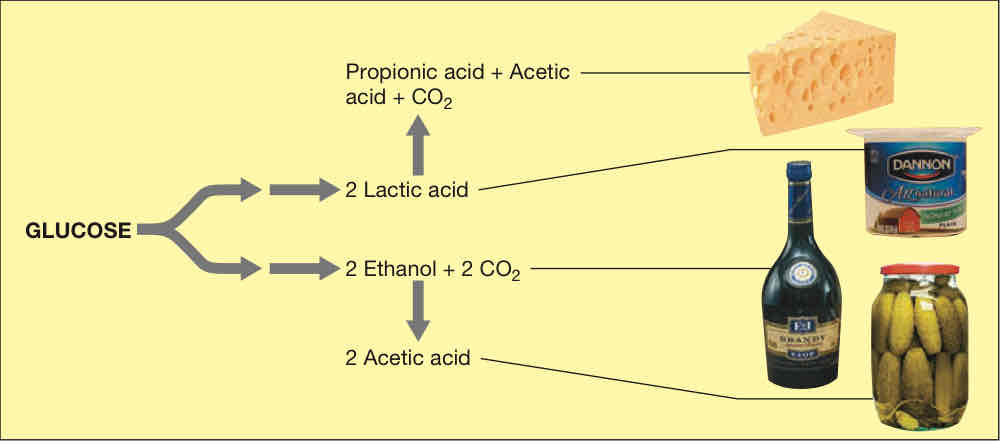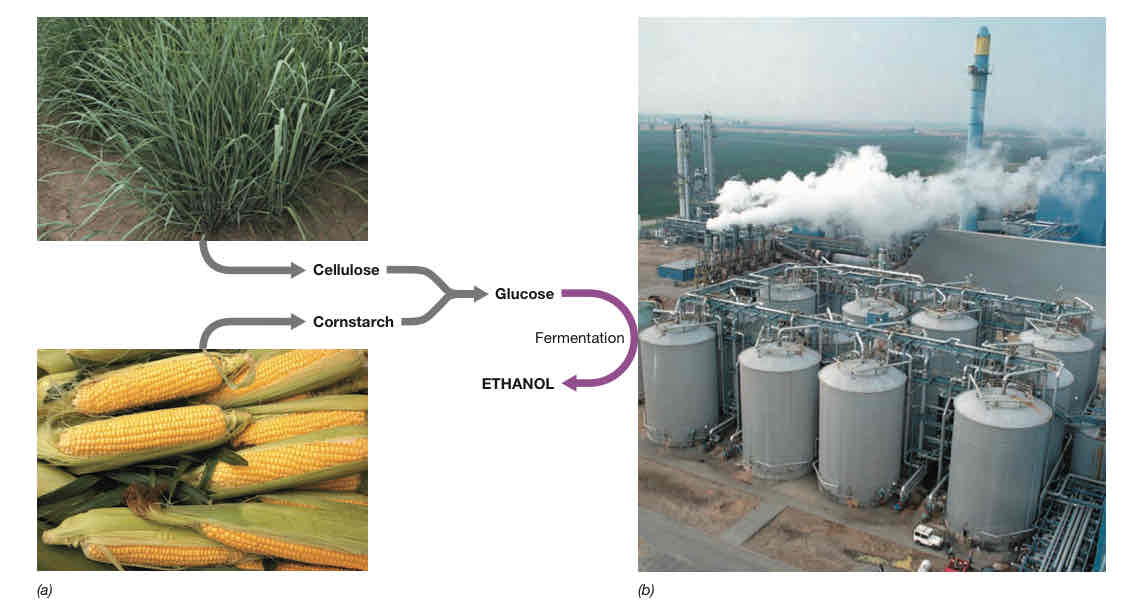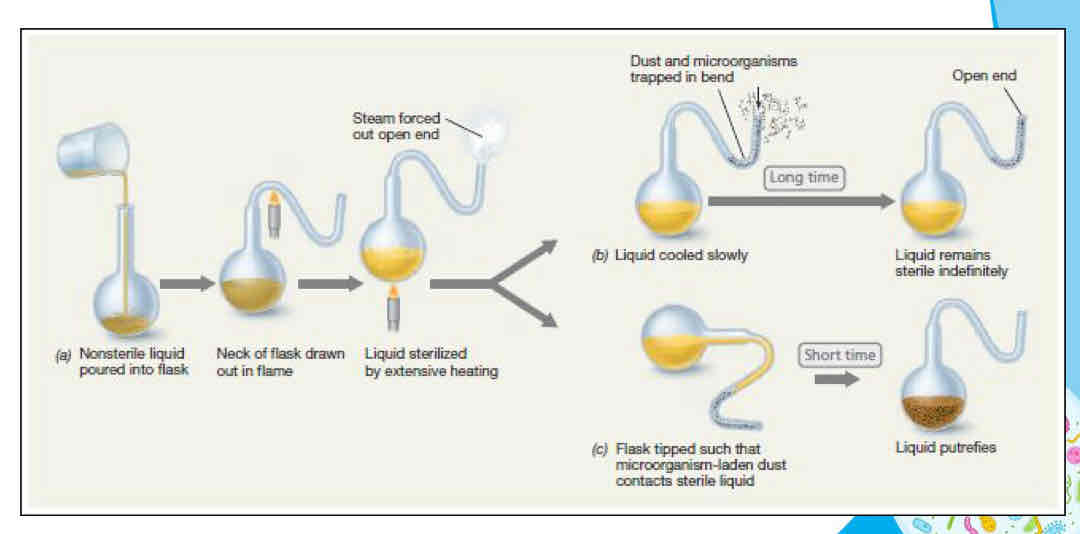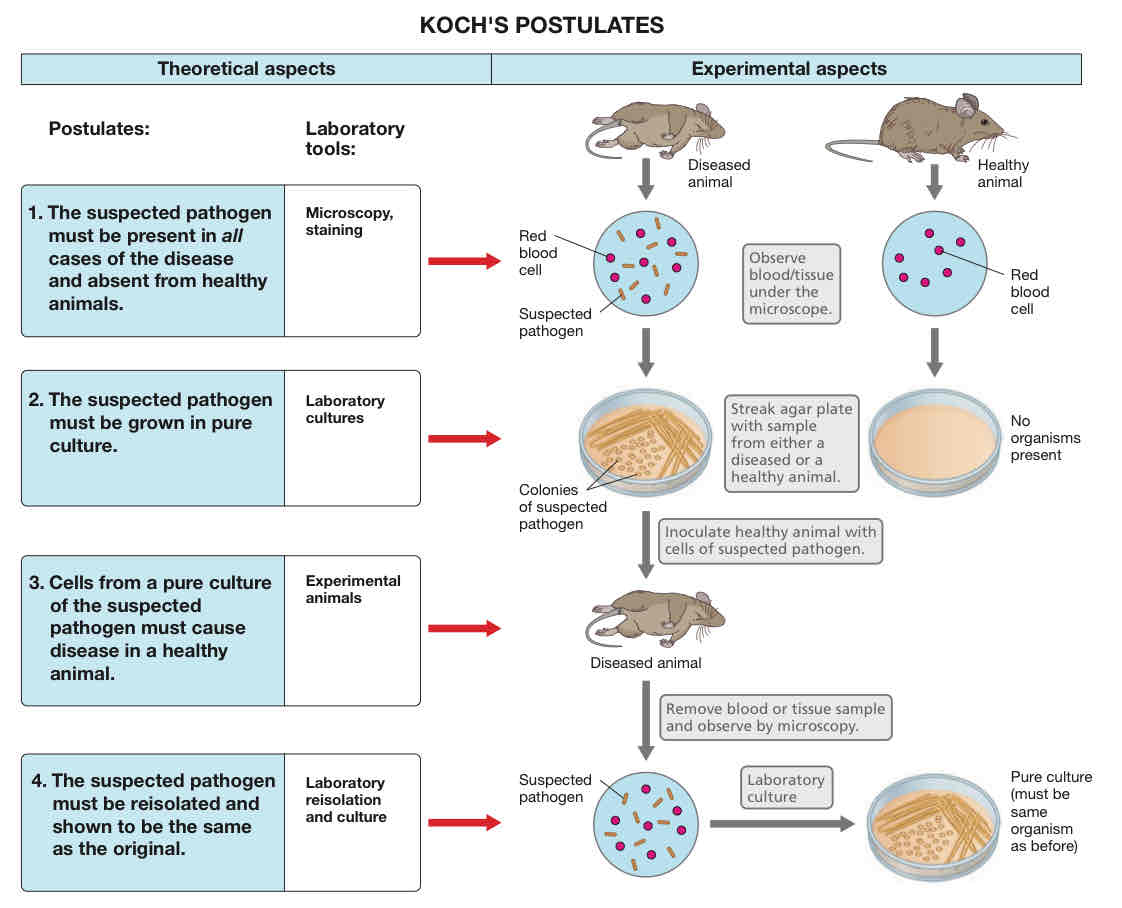Lecture 1: History and Scope of Microbiology
1/94
There's no tags or description
Looks like no tags are added yet.
Name | Mastery | Learn | Test | Matching | Spaced |
|---|
No study sessions yet.
95 Terms
Microbiology (3)
It is derived from the word “mikros” meaning small, “bios” means life, and “logos” meaning study.
It is the study of living things too small to be seen with the naked eye, called microbes.
It revolves around the (1) understanding of the nature and function of the microbial world, and (2) applying our understanding of the microbial world for the benefit of humankind and planet Earth.
Microorganisms (3)
These are life forms too small to be seem by the unaided human eye.
They represent a major fraction of Earth’s biomass, and are essential to sustaining life.
Many are undifferentiated, single-celled organisms, but some can form complex structures, and some are even multicellular.
Microbes (2)
It is a more general term for describing extremely small structures related to life.
It includes non-organismal structures such as viruses, viroids, and prions.
Microscopy (2)
The discovery of the microscope gave birth to microbiology and is considered as one of the foundations of microbiology.
It helped in visualizing microorganisms and observing their biology.
Microbial culture
It is a collection of cells that have been grown in or on, a nutrient medium.
Medium
It is a liquid or solid nutrient mixture that contains all the nutrients required for a microorganism to grow.
Microbial growth
It refers to increase in cell number as a result of cell division.
Microbial colony (2)
It is a macroscopic structure composed of millions of cells that formed from a single microbial cell.
It is only formed in a solid medium
Cytoplasmic membrane (2)
It is also known as the plasma membrane or the cell membrane.
It separates the inside of the cell from the outside.
Cytoplasm
It is an aqueous mixture of macromolecules, small organic molecules, various inorganic ions, and ribosomes.
Ribosomes
These are structures responsible for protein synthesis and is found in all cells.
Cell wall (2)
It is a relatively permeable structure located outside the cell membrane, and is much stronger than the membrane itself.
Plant cells and most microorganisms have cell walls, whereas animal cells typically do not.
Eukaryotic cells (3)
They are found in the phylogenetic domain Eukarya.
This group includes plants and animals, as well as microbial eukaryotes, such as algae, protozoa, and fungi.
They contain an assortment of membrane-enclosed cytoplasmic structures called organelles.
Prokaryotic cells (3)
They are found in the domains Bacteria and Archaea.
They have few internal structures, lack a nucleus, and typically lack organelles.
The prokaryotic cell structure evolved before the evolution of the eukaryotic cell, and is therefore, less complex and degrees smaller.
Genome (2)
It is the totality of the genes of a cell and controls its life processes.
It is the living blueprint of an organism.
Gene
It is the segment of DNA that encodes a protein or an RNA molecule.
Genome of Eukaryotes
The DNA is present as linear molecules within a membrane-closed nucleus.
Genome of Prokaryotes (3)
It is in the form of a close circular chromosome.
The chromosome aggregates within the cell to form a mass called the nucleoid.
Most prokaryotes have only a single chromosome.
Plasmids (2)
They are one or more small circles of DNA distinct from that of the chromosome found in a prokaryotic cell.
They typically contain genes that confer a special property on the cell (e.g. metabolism, antibiotic resitance) rather than essential genes.
Why microorganisms are especially useful in research? (3)
They have relatively simple structures and reproduce quickly.
Large number of microorganisms can be used in an experiment to obtain statistically reliable results at a reasonable cost.
They are particularly useful in studies involving transfer of genes.
Carolus Linnaeus
He is a Swedish scientist that developed the taxonomic system for naming plants and animals and grouping similar organisms together.
Taxonomy of Anton van Leeuwenhoek
He categorized microorganisms into six groups: Fungi, Algae, Protozoa, Bacteria, Archaea, Small animals (FAPBAS).
Traditional Whittaker Classification
Robert Whittaker proposed a five kingdom system: Monera, Fungi, Plantae, Animalia, Protista (MFPAP).
Bases of Traditional Whittaker Classification (6)
Morphology
Metabolism (Biochemical Activity)
Molecular Techniques
Fatty Acid Profiles
Protein Differentiation
DNA Fingerprinting
Systematics of Carl Woese
He proposed the three domain system: Bacteria, Archaea, and Eukarya.
Fungi (3)
They are eukaryotic as they have a membrane-bound nucleus.
They obtain food from other organisms (absorptive heterotrophs).
They possess cell walls made up of chitin.
Molds (2)
They are multicellular fungi.
They have hyphae and reproduce by sexual and asexual spores.
Yeasts (2)
They are unicellular fungi.
They reproduce asexually by budding and some produce sexual spores.
Protozoa (5)
They are single-celled eukaryotes.
They are similar to animals in nutrient needs and cellular structure.
Some live freely in water and some live in animal hosts.
They mostly produce asexually but can be capable of sexual reproduction.
Most are capable of locomotion by their pseudopodia, cilia, or flagella.
Algae (4)
They can be unicellular or multicellular.
They are capable of photosynthesis.
They have simple reproductive structures.
They are categorized based on their pigmentation, storage products, and cell wall compositon.
Prokaryotes (4)
They compose the domain Bacteria and Archaea.
They are unicellular, lack nuclei, and much smaller than eukaryotes.
They are found everywhere and some are in extreme environments (extremophiles).
They reproduce asexually.
Bacteria (3)
They have cell walls containing peptidoglycan.
Some taxa lack cell walls.
Most do not cause disease and some are actually beneficial.
Archaea (2)
They have cell wall composed of polymers other than peptidoglycan.
They also have histone proteins in their chromosome which help in coiling.
Viruses (3)
Individuals are called a virus particle or a virion.
They are not independently living cellular organisms and depend on the infected cell’s machinery to multiply and disperse.
They are much simpler than cells and is basically a small amount of DNA or RNA wrapped in protein and sometimes by a lipid membrane.
Properties of all cells (3)
Metabolism
Growth
Evolution
Properties of some cells (4)
Differentiation
Communication
Genetic exchange
Motility
Metabolism (3)
It is when cells take up nutrients from the environment and transforming them into new cell materials and waste products.
Genetic (replication, transcription, translation)
Catalytic (energy, biosynthesis)
Growth
It is when cells gather nutrients from the environment and are converted into new cell materials to form new cells.
Evolution (2)
It is when cells display new properties in order to adapt to their environment.
It results when genes in a population of cells change in sequence and frequency over time, leading to descent with modification.
Differentiation
It is when some cells modify their structure which results in specialized cells for growth, dispersal, or survival.
Communication
It is when some cells interact with each other by chemical messengers (intercellular communication).
Genetic exchange
It is when some cells exchange genes with neighboring cells, either of the same or different species (horizontal gene transfer).
Motility
It is when some cells are capable of self-propulsion.
Benefits in Agriculture (3)
Some crops like legumes live in close association with nitrogen fixing bacteria which form structures called nodules in their roots.
Some bacteria also cycle sulfur which is essential for plant growth.
Microorganisms inhabit the rumen of ruminant animals to help them digest and ferment cellulose.
Benefits in Human Nutrition (2)
Microorganisms in the colon assist in diegestive processes by synthesizing essential nutrients;
They also compete for space and resources with pathogenic microorganisms.
Negative Effects in Agriculture
Microbial diseases in plants and animals used for human food cause major economic losses every year.
Negative Effects in Human Nutrition
Food products can cause serious human disease when containing pathogenic microorganisms.
Benefit and Negative Effect in Food Industry (1,1)
Many microorganisms are desirable or even essential in making fermented foods; helps in food preservation.
They cause food spoilage and results in huge economic losses.
Foods produced by fermentation (3)
Dairy products (cheeses, yogurt, and buttermilk)
Fermented vegetables (sauerkraut, kimchi, pickles)
Baked goods and alcoholic beverages rely on yeast fermentation
Benefits in Energy Production (Biofuels) (3)
A group of Archaea called methanogens produce methane as a product of anaerobic metabolism.
Ethanol is produced by microbial fermentation of glucose obtained from feedstocks such as sugarcane, corn or rapidly growing grasses.
Soybeans contain oilds that can be converted into fuel for diesel engines.

Fermented foods


Biofuel production

Bioremediation
Microorganisms are used to consume spilled oil, solvents, pesticides, and other environmentally toxic pollutants.
Industrial microbiology (2)
Naturally occuring microorganisms are grown on a massive scale to make large amounts of commercially available products.
This includes the production of antibiotics, enzymes, and certain chemicals.
Biotechnology (2)
It employs genetically engineered microorganisms to synthesize products of high value.
This includes insulin or other human proteins, usually on a small scale.
Robert Hooke (2)
An English mathematician who observed microorganisms in his development of the compound microscope.
He wrote a book called Micrographia which illustrated many microscopic observations.
Antoni van Leeuwenhoek (3)
He was a Dutch draper and amateur microscopits who constructed extremely simple microscopes containing a single lens.
He was the first person to see bacteria in 1676, the smallest microbial cells, by examining pepper-water infusions.
In his report of observations to the Royal Society of London, he referred to these microbes as “wee animalcules.”
Ferdinand Cohn (3)
A German-Polish botanist who studied unicellular algae and later to bacteria.
He was particularly interested in heat resistance in bacteria which led to his discovery of endospores.
He devised methods for preventing contamination of culture media such as use of cotton for closing flasks and tubes.
Redi’s Experiment
When decaying meat was kept isolated from flies, maggots never developed → When meat is exposed to flies, it was soon infested → When only a gauze, the flies laid eggs on the gauze → Resulted in scientists doubting abiogenesis (Aristotle’s theory)

Pasteur’s Experiment
When the swan-necked flasks remained upright, no microbial growth appeared → When the flask was tilted, dust from the bend in the neck seeped back into the flask and made the infusion cloudy with microbes within a day.

Pasteur on Optical Isomers and Fermentations (3)
He studied crystals of tartaric acid and separated them based on their optical activity (D-tartrate or L-tartrate)
He discovered that the mold Aspergillus metabolized D-tartrate but not L-tartrate.
He began to suspect that some chemical activities are actually catalyzed by microorganisms.
Spontaneous generation
It is the belief that living organisms arise from nonliving materials.
Pasteurization
It is the use of heat to kill contaminating microorganisms which kept food from putrefying.
Pasteur on Vaccines (2)
He developed vaccines for anthrax, fowl cholera, and rabies.
He administered the first rabies vaccine to a young French boy named Joseph Meister.
Germ Theory of Disease (3)
This states that diseases are caused by germs or microorganisms.
It is further developed by Pasteur, and then followed by Robert Koch.
Robert Koch explored this theory by his study of Bacillus anthracis, the causative agent of anthrax. This formed Koch’s Postulates.
Koch’s Postulates (1, 4)
These postulates served as the guide to discover the causative agents of diseases.
The suspected pathogen must be present in all cases of the disease and absent from healthy animals.
The suspected pathogen must be grown in pure culture.
Cells from a pure culture of the suspected pathogen must cause disease in a healthy animal.
The suspected pathogen must be reisolated and shown to be the same as the original.

Koch and Pure Culture (3)
It was developed from Koch’s second postulate as the suspected pathogen must be isolated and grown away from other microorganisms (pure)
They started cultivating pure cultures in potato slices but eventually used growth media solidified with gelatin, then later agar.
He reasoned that each colony harbored a population of identical cells, that is, a pure culture.
Richard Petri
He developed the transparent double-sided Petri dish, which became the standard tool for obtaining pure cultures.
Koch and Microbial Taxonomy (2)
Robert Koch argued that colonies that differed in color and size are different types of microbes.
He realized that these differences are same with ones used in taxonomy and argued that microorganisms should be considered as species as well.
Robert Koch (8)
He developed simple staining techniques.
He took the first photomicrograph of bacteria in alive and diseased tissue.
He discovered techniques for estimating CFU/mL.
He discovered the use of steam to sterilize media.
He was the first one to utilize Petri dishes in pure culture.
He developed Koch’s Postulates, an important concept in Germ Theory.
He proposed that bacteria can have distinct species.
He was able to identify the causative agents of anthrax, cholera, and tuberculosis using his postulates.
Martinus Beijenrinck (4)
His greatest contribution to the field of microbiology was his clear formulation of the enrichment culture technique.
Using his technique, he was able to isolated the first pure cultures of many soil and aquatic microorganisms.
This includes sulfate-reducing and sulfur-oxidizing bacteria, nitrogen-fixing root nodule bacteria, lactic acid bacteria, green algae, various anaerobic bacteria, and many others.
He was also able to identify that the infectious agent of the tobacco mosaic disease (a virus) was smaller than a usual bacterium.
Enrichment cultures
Microorganisms are isolated from natural samples using highly selective nutrient and incubation conditions to favor a particular metabolic group of organisms.
Sergei Winogradsky (3)
He discovered the process of nitrogen fixation by isolating the aerobic nitrogen-fixing bacteria Azobacter from the soil.
He ashowed that nitrifying and sulfur bacteria catalyze specific chemical transformations in nature and are said to be chemolithotrophic.
He performed the first isolation of a nitrogen-fixing bacterium, the anaerobe Clostridium pasteurianum.
Chemolithotrophy (2)
It is the oxidation of inorganic compounds to yield energy.
Chemolithotrophs are widespread in nature and obtain their carbon from carbon dioxide.
Ignaz Semmelweis
He improved sanitation, especially in hospital to control infections, by developing handwashing techniques.
Joseph Lister
A British physician who introduced aseptic techniques for surgeries preventing human infections.
Florence Nightingale
She helped in developing many foundations in nursing, including proper sanitation to prevent infections.
John Snow
He helped in developing strategies for infection control and is considered to be one of the founders of epidemiology.
Edward Jenner
He pioneered the use of vaccines, and developed the first one, the smallpox vaccine.
Paul Ehrlich (2)
He developed the cure for syphillis and chemotherapy.
He introduced the idea of a “magic bullet”; a cure for microbes that will not harm the body itself.
Albert Kluyver and Cornelius van Niel
They used microbes as model systems for biochemical reactions
Georg Büchner
He discovered the enzymes in yeast extracts.
Practical Applications of Microbial Biochemistry (4)
Design of herbicides and pesticides
Diagnosis of illnesses and monitoring of patients’ responses to treatments
Treatment of metabolic diseases
Designing of drugs
Genomics (3)
It is the mapping, sequencing, and analysis of genomes.
Genomic data helps in attacking problems in medicine, agriculture, and the environment.
It spawned new subdisciplines, such as transcriptomics, proteomics, and metabolomics.
Transcriptomics
It explore the patterns of RNA in cells.
Proteomics
It explores the patterns of proteins in cells.
Metabolomics
It explores the patterns of metabolic pathway expression in cells.
Recombinant DNA Technology (2)
Genes in microbes, plants, and animals are manipulated for practical applications.
An example is the production of human blood-clotting factor by E. coli to aid hemophiliacs.
Gene Therapy
Inserting a missing gene or repairing a defective one in humans by inserting desired genes into host cells.
Serology
It is the study of the blood serum.
Von Behring and Kitasato discovered the existence of chemicals and cells that fight infection, in the blood.
Immunology
It is the study of the body’s defense against specific pathogens.
Alexander Fleming
He discovered the antiobiotic properties of penicillin.
Gerhard Domagk
He discovered the sulfa drugs (Prontosil).
MRSA, VRE, VRSA, MDR-TB
Methicillin Resistant Staphylococcus aureus
Vancomycin Resistant Enterococcus
Vancomycin Resistant Staphylococcus aureus
Mulidrug Resistant Tuberculosis